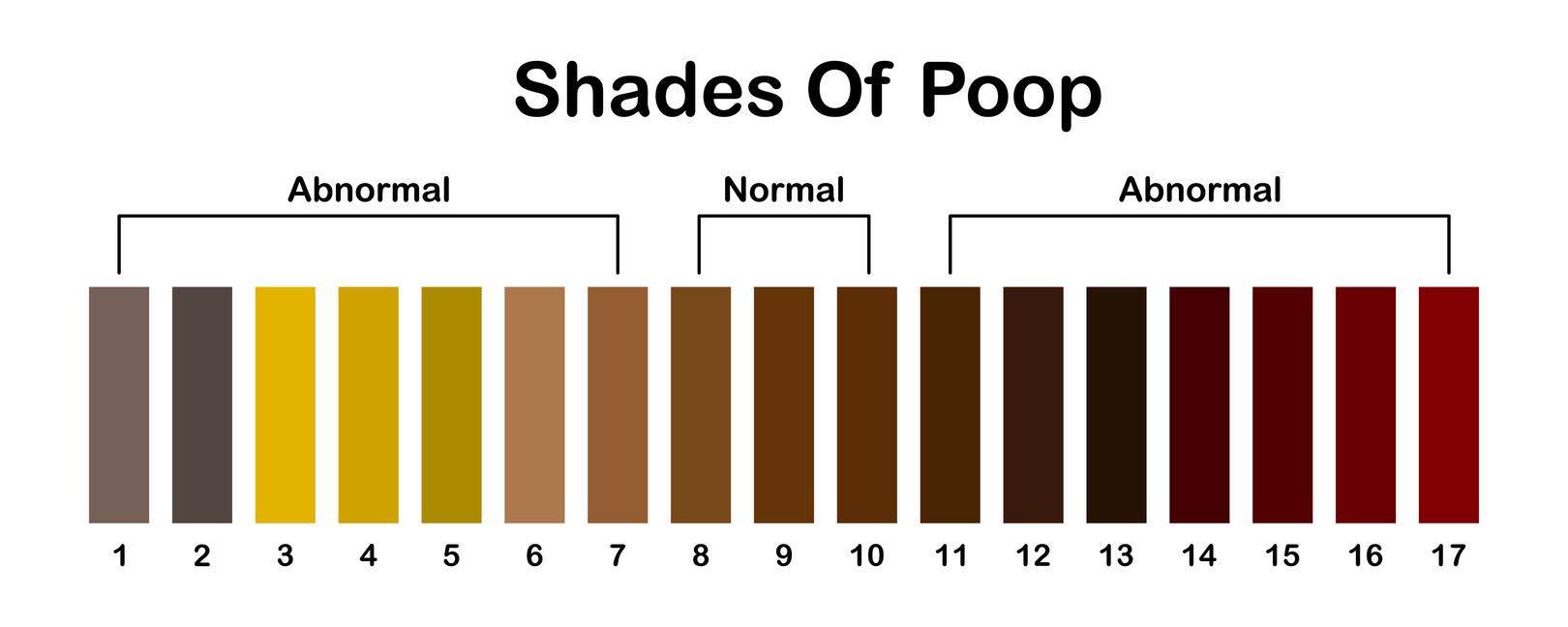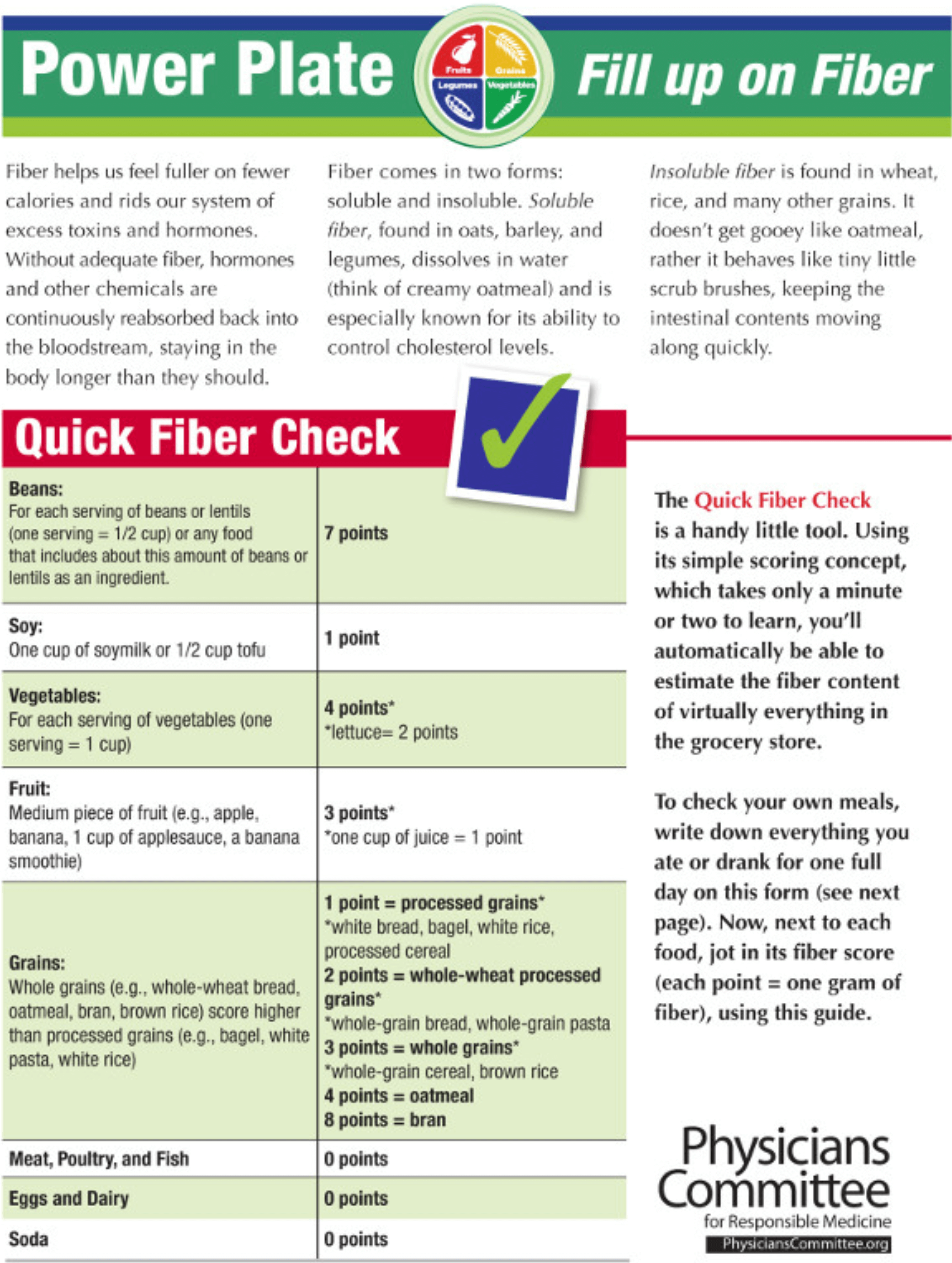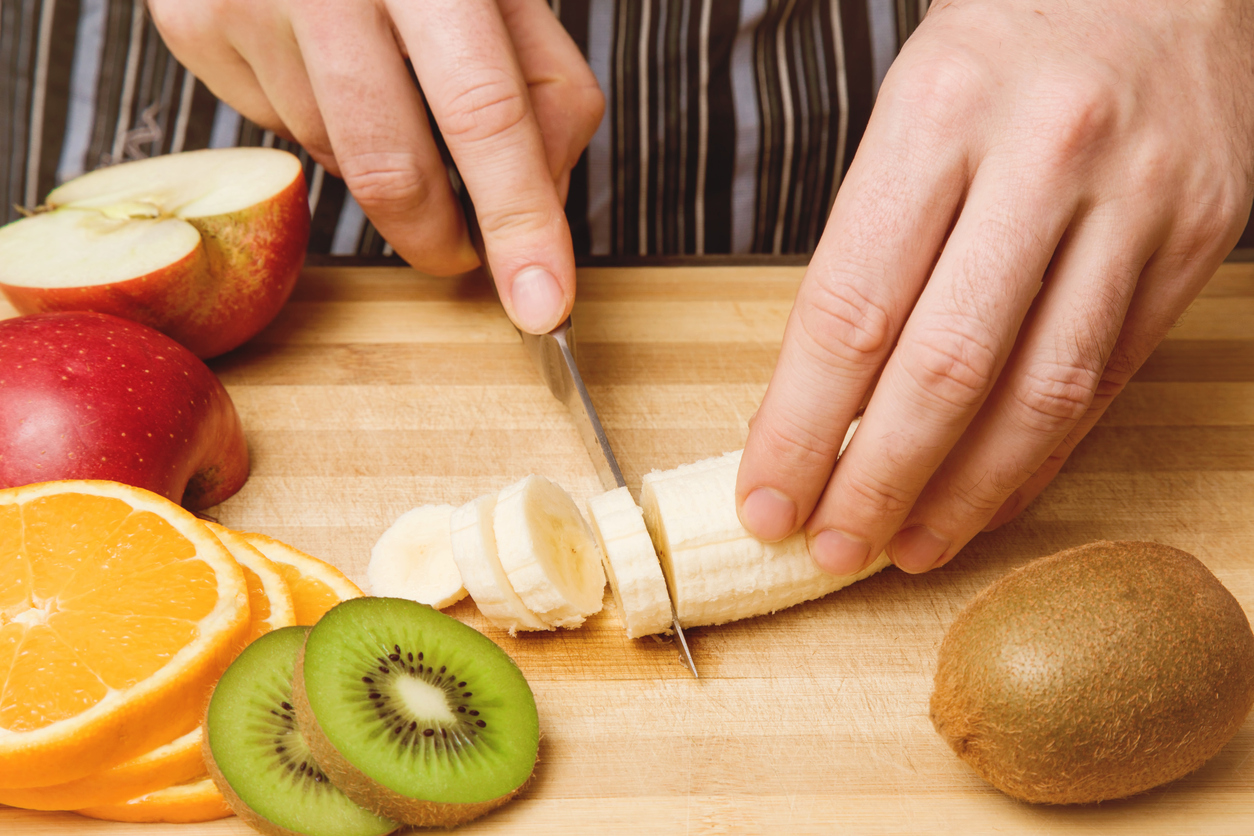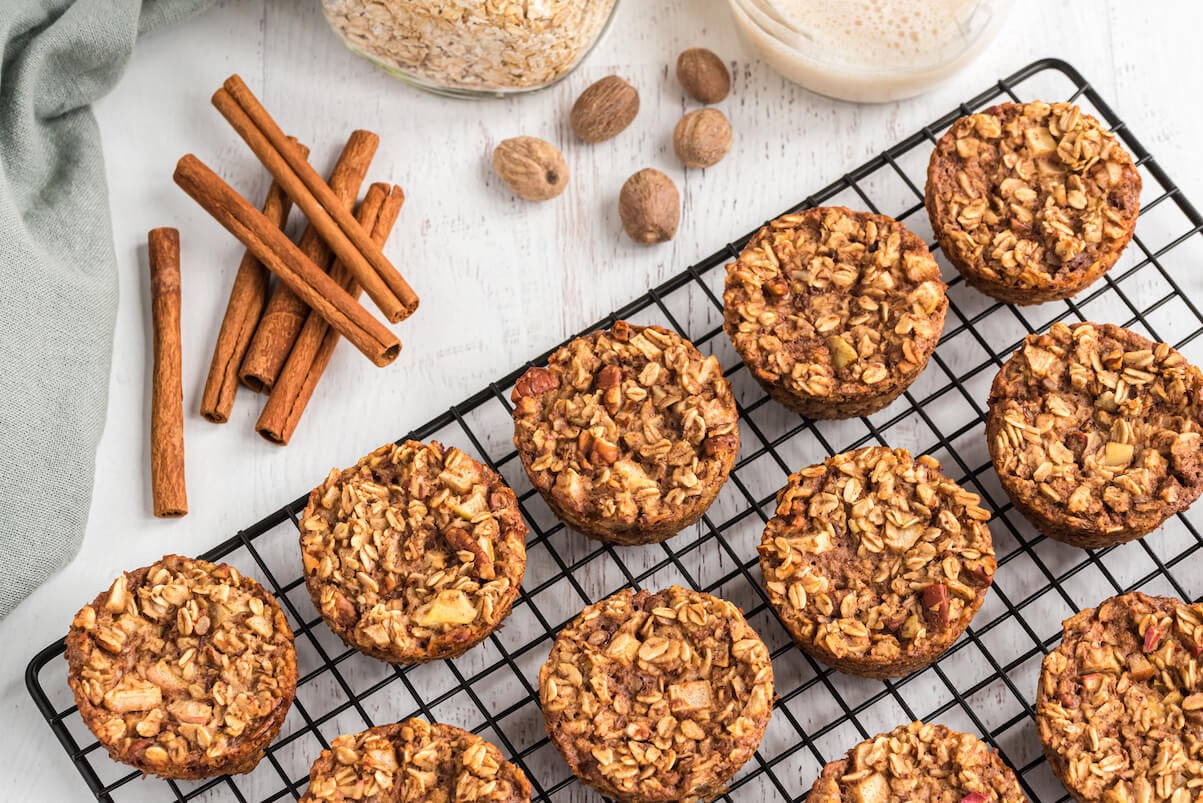by Ocean Robbins : “Why are these people pooping so much?”
We are proud to announce a new partnership with John and Ocean Robbins and the Food Revolution to bring our readers Summits, Seminars and Masterclasses on health, nutrition and Earth-Conscious living.
Sign Up Today For the Healthy Brain Masterclass
That may have been the most charitable thought in the mind of the river guide as he packed off the river, hiked to the highway, and attempted to hitchhike into town to pick up another 10 empty buckets.
The year was 2013. My dad, John Robbins, and I were leading a Food Revolution Network whitewater rafting trip on the Klamath River in Northern California.
We hired a rafting company to provide all the necessities for the trip: rafts, guides, food, camping gear. One of the rules of the river was, “Leave no trace.” In other words, whatever we brought in, we brought out again. And that included, not to put too fine a point on it, our poop.
We would set up a camp on a river beach every evening that included little porta-potties that were basically seats over five-gallon buckets. And the following morning, we’d pack everything up — including the buckets, very tightly sealed, of course — and carry it all with us for the rest of the trip.
The rafting company had been leading these tours for almost 20 years. They had everything down to a science — the right amount of food, the time it would take to navigate from campground to campground, the number of canisters of cooking gas, that sort of thing. As well as the number of porta potty buckets required to handle the fecal material of a given number of participants.
And that’s where things started going wrong.
Our trip with 40 people was their first time catering to so many fully plant-based eaters. And while they got the amount of food right, they drastically miscalculated the volume of poop that we would produce.
After the first night, they informed us that we had filled roughly twice as many buckets as any prior group, and it became apparent that the 10 buckets they had brought were not going to do the job. And that’s why one of the guides found himself on an emergency mission to town, to purchase 10 additional buckets to accommodate this oddly “productive” group.
After that, they always brought extra buckets whenever we contracted with them.
The moral of this story — plant-based eaters poop more.
A Poop Guide for the Masses
In this article, we’ll examine how that works and why it’s typically a very good thing, plus how you can get a sense of your health status by taking a closer look at your own poop than you may be used to. Your bowel movements can give you valuable insight into your health, so you can take action to optimize it.
So let’s dive in — hmm, maybe not the best turn of phrase to use in a poop guide.
What Is My Poop Telling Me?

I know many cultural taboos are making it difficult to talk about poop and pooping, but hey — everybody poops. (I know this because an Amazon.com search for books with the title Everybody Poops yields six different books so named, so it must be true.) And while pooping has long been a subject discussed most heartily by children of a certain age (and, full disclosure, occasionally a topic of casual conversations here at FRN), there’s a lot of ignorance surrounding bowel movements.
Everybody Poops
People have lots of questions about poop, at least according to Google. The number of people searching for answers to their poop-related queries has remained consistently high over the past five years.
I get it. It’s natural to be curious about our bodies, and pooping is a big part of having one. You might also become alarmed when your poop doesn’t look the way you think it should (or the way it looked yesterday or last week) or if Google’s search results inform you that your poop or pooping habits aren’t “normal.” (Or if you and your friends start running out of buckets on a camping trip.)
So what is normal when it comes to pooping? If you struggle with fecal elimination, either constipation or overactivity, what steps can you take to improve your bowel health? And what are some of the best foods to help you poop like a champ?
In this guide, we’ll take a look at what makes for healthy poop, what you can learn from taking a look at yours, and steps to consider if constipation is slowing you down.
If you’re dealing with IBS, you might want to visit our article on IBS after enjoying this one.
What Is Poop?
Poop is your body’s way of getting rid of solid waste. Also known as feces or fecal matter, poop is food’s last stop before it exits your digestive system and returns to the world. Your poop is composed of water, protein, undigested fats, polysaccharides, bacterial biomass, ash, and undigested food residues (like fiber).
Normal poop is about 75% water and 25% solid materials and consists of both organic and inorganic materials. Your poop may even contain microplastics, which you can consume by eating food that’s been contaminated.
Some people’s poop is quite hard and contains a good deal less water than 75%. This can sometimes be related to slow transit time — meaning that it takes its time moving through your digestive system to become poop. When waste matter moves through the colon too slowly, the colon will continue to absorb more and more of any water that’s in there — one of its primary jobs — and the stool becomes drier and harder.
In other cases, hard poop can result from a diet lower in fiber since fiber in the stool also acts like a sponge and draws water into the colon. That was probably a big factor on the rafting trip since our groups weren’t eating significantly larger quantities of food than the other groups. We just ate a lot more fiber, which attracted and held on to water. And both fiber and water add bulk to poop.
Why Is Pooping Important?

Well, if you didn’t defecate, I suppose you’d eventually explode. But maybe that’s not the hard-hitting scientific answer you’ve come to expect from the Food Revolution Network. So let me try again.
Research shows an association between constipation and oxidative stress. When we eliminate waste on a regular basis, we lower oxidative stress in our bodies. Not pooping frequently enough appears to increase the risk of several chronic diseases, including cardiovascular disease and some cancers. Plus, it doesn’t feel good.
Transit time is a key factor in digestive health. It turns out there’s a healthy range of transit times, and both over and undershooting can cause problems.
On the one hand, our bodies need a certain amount of time to absorb water and critical nutrients. That’s why diarrhea can cause dehydration and leave us undernourished.
But when the poop train slows down too much, other problems can ensue. The longer food takes to pass through the colon; the more harmful bacterial degradation products are produced.
When you’re constipated, there’s a greater contact time between waste and your intestinal wall, which may increase the formation and absorption of fecal mutagens — substances that cause DNA mutations and cancer — into circulation. The association between constipation and breast cancer has been observed since the 1980s.
Female Poop Concerns
Pooping is important for everyone, but male and female bodies handle poop a bit differently. Because female reproductive organs take up more space than the male equivalent, female colons must be longer to navigate around all that non-digestive real estate. Food, therefore, takes longer to go from mouth to anus in females, which may be a central reason that women suffer from gastrointestinal discomfort at higher rates than men.
As poop moves through the colon, water and other components are reabsorbed by the body. If the process takes too long, that can cause a problem as estrogen and other hormones that are supposed to be “on the way out” get reabsorbed. Lots of fiber in the colon reduces circulating estrogen levels and decreases this reabsorption concern.
What Does Healthy Poop Look Like?

Have you ever looked at your poop? I mean, really looked at it? If not, well, there’s no time like the present! (Or the near future, unless you’re actually reading this on the can.)
Aside from simple curiosity, your poop can tell you a lot about your health. In fact, there’s a widely used diagnostic called the Bristol Stool Scale that’s been around for a few decades. It shows images of seven different types of poop and explains what each form signifies.
I’m pretty sure the sausage industry did not fund the research, although based on the number of stool types that are described as sausage-like or sausage-shaped (three out of seven, in fact), who knows. Types three and four are ideal poop types (both smooth and “like a sausage”). Types one and two show signs of constipation, which may have many possible causes, including some medical conditions and medications.
Types five, six, and seven show signs of diarrhea, which is often caused by infections or viruses but may also be due to medical conditions, food allergies and intolerances, and antibiotics.
Your poop will differ in shape, size, color, and odor, even from day to day, based on what you eat or drink, whether you’re sick, or if you’re menstruating.
A not-quite-normal poop isn’t always a sign of something serious. But if abnormal bowel movements last for longer than two weeks or are accompanied by other serious symptoms, you may want to consult with a health care professional.
Size: What’s a Normal Poop Size?
In general, large poops indicate better health than small ones. The target poop size is typically 4–8 inches long. How much should you poop? Back in 1992, a study of 20 populations across a dozen countries found that among people whose total daily poop weighed half a pound or less, colon cancer rates increased dramatically. And in those people whose daily poop total was around four ounces, colon cancer rates quadrupled. (Don’t worry, I’m not asking you to save and weigh all your deposits! I think you get the point.)
Smaller and more compact stools may indicate low fiber intake, whereas larger and moister stools may indicate high fiber intake (as is often seen with plant-based diets that have a propensity to fill up buckets on river rafting trips).
Populations who consume more of a vegetarian, traditional diet often have bigger bowel movements than those eating a modern industrialized diet heavy on processed and animal foods. But that’s not a hard and fast rule — someone who is constipated and not evacuating their bowels efficiently may produce extra large and painful stools when they do.
Color: What Color Is Healthy Poop?
In addition to structure and size, you can also learn much about your health from the color of your poop. While none of these hues are likely to win Pantone’s “Color of the Year” (yes, that really is a thing), you can use this guide to understand healthy stool colors in adults and whether your poop falls in the normal range.

Brown Poop
As emoji designers know, the normal color of poop is brown, which is produced from three different colored substances that combine when hemoglobin is broken down — heme (reddish), biliverdin (green-colored), and bilirubin (yellow-colored). The resulting waste product of hemoglobin metabolism is called stercobilin (just in case you’re going to a party tonight and need a conversational gambit that will all but ensure you will be left alone for the rest of the evening.)
Yellow Poop
Yellow poop might be a clue to the presence of undigested fat in the stool. Likely causes include pancreatic disorders, bacterial or viral illness of the digestive system, cystic fibrosis, or celiac disease. If this happens occasionally, it’s probably not a worry. But if your poop is consistently yellow, that’s a different story.
Black Poop
When your poop comes out black, it may be caused by some supplements or medications typically prescribed for GI symptoms, such as iron pills or bismuth-containing medications. I was unable to determine whether poop high in iron is magnetic, which I think might be a not-very-fun study to do, depending on the answer and how strong a magnet you were using.
Is dark poop bad? Dark brown poop or black poop may also indicate upper GI bleeding (sometimes accompanied by other symptoms such as dizziness) due to an ulcer or colon cancer.
Maroon or Red Poop
When your poop starts looking like a beet, the first suspect may, in fact, be a beet. Certain red foods, including beets, cranberries, prune juice, and processed foods with added red food dyes, can stain your stool reddish and have no particular health significance whatsoever. (There’s a hilarious Portlandia clip that makes this point well.)
Other reasons for red poop may not be so benign. If that red is from blood in your stool, it may indicate GI tract bleeding in the lower parts of the small intestines or the colon.
Green Poop
Green poop can arise from the consumption of lots of green vegetables or large amounts of powdered greens. One member of our FRN team can’t unsee a stool that was caused by a chlorophyll-rich diet. Her verdict: “Wow!” Other foods that can greenify your stool include blueberries, hemp seeds, green apples, honeydew melons, and herbs such as parsley, cilantro, and basil. And, of course, green food dye, such as you might find frosting a St Patrick’s Day cupcake, can have you pooping emerald.
The most common medical condition that colors feces green is diarrhea, such as the kind caused by IBS. People who have had their gallbladders removed can also produce green poops, as can bacterial and viral infections.
Gray or Clay-Colored Poop
Gray, clay-colored stools contain little or no bile. This may signify a condition where the flow of bile to the intestine is obstructed. Sometimes such a biliary obstruction is caused by a tumor or gallstone, either in the bile duct or nearby pancreas.
How Often Should You Poop?

Sometimes there’s a big difference between normal (conforming to a norm) and healthy. And the issue of bowel movement regularity is one of those situations. “Normal” pooping frequency could be anywhere from three times a day to three times a week.
But scientists don’t exactly have a robust data set to base that on. If you look up past winners of the Nobel Prize for Physiology or Medicine, you’ll see discoveries like “how cells sense and adapt to oxygen availability” and “cells that constitute a positioning system in the brain.” No one in the 122-year history of the prize has won for discovering “how many times a day people in different cultures poop.”
Which means we really don’t have a clear picture of a universal human norm. And medical recommendations are generally based on what is known in industrialized populations, such as those found in North America and Europe. (That taboo against talking about poop is a pretty universal one. Western scientists who’ve tried to study the pooping habits of other cultures are often considered a bit odd by their subjects.)
Bowel Movement Frequency Varies
That doesn’t mean we can’t generalize at all. For one thing, frequency often varies based on age and sex. People tend to move their bowels less as they age. Females tend to have fewer bowel movements than men, and experience harder stools (possibly because, as we’ve already seen, their feces have to travel a greater distance).
Another yet-to-be-tested possibility for this is that girls are traditionally socialized (in the US, at least) from a young age not to be smelly or make rude noises. So as they spend more time in the outside world, say at school, they resist urges to move their bowels in public bathrooms. Over time, their colons eventually adjust, and bowel movements become less frequent and often can only occur at home. Again, just a theory — but it sounds pretty plausible to me.
Diet also plays a big role. As our rafting guides learned, vegetarians and people who follow other types of plant-based diets, tend to have more frequent and larger bowel movements than omnivores — at least in part because there’s no fiber in any animal products — and lots of fiber in whole plant foods. Also, Asians, sub-Saharan Africans, and Middle Eastern peoples tend to consume more fiber and water, and have more frequent stool eliminations, than people eating a modern industrialized diet.
Normal vs Optimal Pooping
Back to the big point — normal doesn’t always equal optimal. For example, the normal amount of fiber eaten by Americans is far too low. In fact, only 3% of Americans consume what the FDA considers “adequate intake,” a number that is actually far from optimal. And 16% of Americans have chronic constipation.
The founder of western medicine, Hippocrates, thought bowel movements should ideally be 2–3 times a day, which is what we see in many populations on traditional plant-based diets. This corresponds to the number of meals most people eat, which has given rise to the “you eat, then you poop” school of gastroenterology.
To be clear, we’re not talking instantaneous here — no need to sprint from dining room to powder room unless you have a very large house. But the experience of chewing and digesting a new meal tends to prime your body to eliminate an old one.
How to Poop (If You’re Constipated)

Since constipation is the most common pooping problem, let’s talk about what you can do about it.
Get Enough Fiber
Fiber is one of the most important nutrients to keep you regular and reduce constipation. It can also help rid the body of toxins, including potential carcinogens. Through a process called osmosis, fiber extracts liquid that contains toxins, which the body then expels as poop.
So how much fiber should you get? As we’ve seen, most people eating the standard American diet don’t get nearly enough. Opinions vary; the US FDA recommends 28 grams per day, while the UK and Indian health authorities bump that up slightly, to 30 grams per day.
The Physicians Committee for Responsible Medicine (PCRM) suggests consuming a lot more; their recommendation is 40 grams a day of fiber for optimal benefit. If that seems like an unobtainable quantity, you may be suffering from the standard American diet. Here’s a PCRM chart that shows you how you can easily achieve 40 grams a day by eating more plant-based foods.

For more on the topic, read our fiber article here.
Stay Hydrated
Does drinking water help you poop? Fiber needs water to do its job in your digestive system. Water helps break down food, and assists your body in both absorbing nutrients and eliminating toxins. So, yes, drinking water helps you poop.
Soluble fiber absorbs water and creates a gel-like substance that shuttles waste into the large intestines. Insoluble fiber traps and retains water pulled from your intestine, adding bulk and moisture to your waste and preventing constipation.
For optimal hydration, aim for at least eight glasses of water, tea, or another healthy beverage daily. You may need less if your diet is filled with lots of steamed veggies, fresh fruit, and other hydrating foods. And you may need more if you consume large amounts of fiber, or if you need to replace water and electrolytes lost through perspiration.
Get Moving
Physical activity aids healthy elimination in several ways. First, it inspires your body to move food through your digestive system. Second, regular exercise also increases blood flow to the digestive system, which makes it work more efficiently. And third, it positively affects your gut microbiome, which, in turn, supports regular bowel movements.
Conversely (which is not a subliminal advertisement for a brand of athletic shoes to exercise in), being sedentary is positively associated with constipation. A 2017 study of obese Egyptian women with constipation found that physical activity and a change in diet improved their condition.
Take Care of Your Gut Health

Your gut microbes play an important role in determining the composition of your feces. A 2015 study of 53 healthy women found strong correlations between being a good pooper and having particular ratios of specific bacterial strains in their microbiomes.
Diet is key here. And the take-home action step is to eat lots of diverse and whole plant foods (and therefore fiber) while minimizing processed and animal-derived foods that lack fiber and may contribute to the formation of harmful compounds in your gut.
In addition to maintaining a healthy and varied diet, there are a number of other strategies that may improve your gut and stool health.
Avoid taking antibiotics and NSAIDS, unless necessary, because of their potential to negatively affect your gut health.
Choose organic produce when possible, and stay away from BE or bioengineered (also known as GMO or genetically engineered) crops. Wash all your produce to reduce chemical residues.
Practice stress management to reduce the impact of stress on your body (and your life). There’s a clear positive correlation between psychological distress and IBS. This is especially important when and if you travel, as “vacation constipation” is a real thing. In addition to the stress of travel, it may also be caused by disruptions to your normal habits and routines, including eating and sleeping differently than you do at home. Some people experience a sudden need for a bowel movement soon after returning from a trip, as their body relaxes into its familiar environment.
If you have any food allergies or intolerances, take care to avoid triggering them. These immune and digestive system “overreactions” often include gastrointestinal symptoms that can affect your bowel movements.
Train Your Bowels
Did you know that you can train your bowels to poop at regular intervals? I’m not talking about using praise and treats, or about five-minute time-outs, but rather about engaging in practices that help your body associate certain external cues and internal sensations with the need (and opportunity) to poop. For example, some people find that just sitting on a toilet seat can “remind” the body what it’s doing there.
One important strategy is to practice going to the bathroom as soon as you have the urge; try not to hold in a bowel movement any longer than you have to. Needing to finish today’s Wordle puzzle is not a good enough reason.
Try to have a bowel movement at the same time each day to help you become more regular. Many people aim to have a bowel movement in the morning, either before or after breakfast.
A lot of runners experience the “first-mile” effect, and start their morning runs with a half-mile jog away from home, followed by a half-mile jog back home that often turns into a full-out sprint or a racing-walking, cheek-clenching waddle. (Speaking from personal experience, it can get pretty awkward.)
Morning coffee can also wake up the bowels within minutes of your first sip.
Be patient at first — you may need to sit on the toilet for a few minutes (or more than a few, but not to the point that you start to feel stressed about it) to encourage your body to relax and go. Sometimes this waiting time goes down as your body gets into a routine.
If you’re constipated, you can also try a bathroom footstool under your feet, such as the Squatty Potty, to shift your body into a posture that’s more conducive to pooping. Our ancestors squatted on the ground before people like Thomas Crapper (I am not making his name up) invented more “civilized” devices.
An Extra Bowel Boost
If none of the healthy suggestions above do the trick, you might want to try a natural laxative.
Flax and Chia Seeds
Our first choices are soaked chia and/or flaxseeds (it’s probably no surprise that we went with whole plant foods). Because they are both hydrophilic (which means they absorb a lot of water), these seeds form a gel-like substance when soaked. This can help waste move more easily through your digestive tract.
You can make a gel by combining one part whole or ground seeds and five (for chia) or three (for flax) parts water, stirring well, and allowing it to gel. Some people start by taking one tablespoon three times a day, and then adjusting up or down until they find the amount that works best for them. If eating the gel plain doesn’t appeal to you, then whipping up a batch of Nichole’s Creamy Vanilla Cinnamon Chia Pudding might just help the plant medicine go down.
Magnesium
Magnesium, another natural option to help you poop, is a mineral crucial for proper muscle functioning, among other things. It can help to ease constipation by drawing water into the colon. Different types of magnesium supplements that may aid with constipation include magnesium oxide, magnesium citrate, magnesium chloride, and magnesium bisglycinate.
A recommended magnesium dosage is typically 500 mg (half a gram), with a maximum daily dose not exceeding 2,000 mg (two grams). A convenient way to take magnesium is in a product like Oxy-Powder, which also contains citric acid and acacia gum.
For more on magnesium, see our article here.
Senna
The leaves and fruit of the senna plant are another natural laxative. Unlike the osmotic effects of magnesium, compounds in senna stimulate peristalsis, the (ideally) rhythmic, wave-like contraction and relaxation of your intestinal muscles that move waste along on its journey to the outside world. It may produce side effects such as diarrhea or stomach cramps, which should subside after a few days. It may also turn your urine reddish-brown.
Dosage is typically around 7.5 mg at a time, or 15 mg daily. It’s generally recommended that you don’t take senna containing laxatives for more than one week because senna can irritate your intestinal lining, and if used too often, can create a rebound effect. Many herbal laxatives, including products such as Swiss Kriss, contain senna.
A Bidet
And last but not least, you may want to consider a home bidet. Wildly popular in many Asian countries, these are starting to make an appearance in North America, too. The luxurious models combine a heated toilet seat with a lovely jet stream of warm water that can clean you up and also provide some healthy elimination-stimulating effects. And while bidets can be a little pricey upfront — you’ll save money by almost eliminating the need for toilet paper. You can check out the one that our family uses and has grown rather fond of here.
Best Foods for a Healthy Poop

In addition to a fiber-rich, well-hydrated diet, specific whole plant foods can also contribute to healthy bowel movements.
1. Apples
Apples are high in fiber and pectin — and they contain gut-protecting polyphenols. Apple juice lacks the fiber, but can still deliver beneficial phytonutrients.
2. Chia Seeds
Chia seeds are high in insoluble fiber, which acts like a broom in your intestines. As I mentioned above, when soaked, the seeds become gel-like and help move food more easily through your digestive tract. And, because they’re so hydrophilic, chia seeds can help add volume to your poops.
3. Flaxseeds
Flaxseeds (and flax oil) are good for your gut and can help with both diarrhea and constipation. The seeds are high in fiber, and when ground, have been shown to increase the frequency of bowel movements in people who are constipated. Like chia seeds, flaxseeds can also serve as an intestinal broom of sorts, as well as a lubricating gel.
4. Prunes
Prunes (and prune juice) can improve stool frequency and consistency. A natural laxative, prunes are high in fiber and natural sugars.
5. Legumes
Legumes are high in prebiotic fiber and contain resistant starch, both of which can help move and bulk up your bowel excretions.
6. Bananas
Bananas can help with both diarrhea and constipation. Green (less ripe) bananas are especially rich in prebiotics.
7. Artichokes
Artichokes feed your gut’s good bacteria with lots of inulin fiber.
8. Kiwi
Kiwi fruit is hydrating, high in fiber and vitamin C, and can soften stools and speed up gut transit.
9. Oats
Oats are high in soluble fiber and a good source of magnesium.
10. Pears
Pears are high in fiber and natural sugars and are hydrating, thanks to their high water content.
11. Pumpkins
Pumpkins are also high in fiber and contain anti-inflammatory compounds. Pureed pumpkin is often prescribed to dogs and cats to regulate their bowel habits. In this case, what’s good for Fido and Fluffy is good for you, too.
12. Leafy Greens
Leafy greens are high in fiber and many phytonutrients and minerals, including magnesium, which can act as a natural laxative.
13. Mushrooms
Mushrooms are a good source of prebiotic treats for your gut microbiome and are also anti-inflammatory.
Recipes to Help You Poop
The recipes below are built to keep you regular, helping you feel light, free, and energized! We want to hear all about your healthy bowel habits after enjoying these tasty dishes!
1. Cinnamon Pear Baked Oatmeal Cups

Here’s a fun fiber fact about pears — they contain six grams each, making them one of the highest-fiber fruits out there. They also have a hefty water content of 86%. Oats have lots of soluble fiber and bananas have prebiotic fiber. Do you know what several types of fiber plus lots of water lead to? A very healthy poop! Because of its high fiber content — as well as its plant-powered protein content — this easy-to-make breakfast will keep you sustained and energized throughout the morning. Make these oatmeal cups ahead of time and store them in the refrigerator for an easy grab-n-go breakfast or snack!
2. Warm Cannellini Bean and Quinoa Salad with Spinach and Sun-dried Tomatoes

This salad isn’t just packed with any fiber. It’s packed with a wide variety of fiber — like prebiotic fiber in the artichokes, shallots, and garlic, insoluble fiber in the quinoa and spinach, and resistant starch in the cannellini beans. Warm Cannellini Bean and Quinoa Salad with Spinach and Sun-dried Tomatoes is a recipe to help cultivate a healthy gut, not to mention nicely-colored, well-formed, and perfectly-sized poop!
3. One-Pot Butter Bean Soup

You’ll get plenty of hydration from the vegetable broth and Swiss chard, and gobs of fiber from the beans, onion, and carrots when you enjoy this flavorful soup. Enjoy it as an appetizer or make it a full meal by adding your favorite cooked whole grain like quinoa, wild rice, or millet (more fiber!).
Here’s to Healthy Bowel Movements!
Pooping is a natural bodily function. Although it doesn’t normally come up in casual conversation (unless you work at Food Revolution Network or for a river rafting company), it’s still a topic that warrants your attention. Don’t be afraid to look in the toilet. The consistency, size, and color of your poop can help you understand the difference between healthy vs unhealthy poop and tell you a lot about your underlying health. Fortunately, there are many things you can do to improve your pooping status. Here’s to healthy bowel movements!

















































